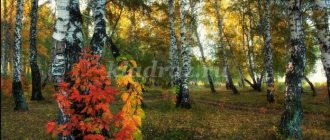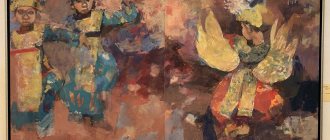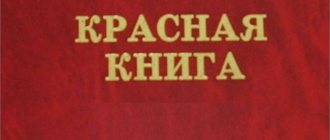Extracurricular activity about wintering birds in elementary school. Presentation script
Methodological development of an extracurricular event “Warm welcome of winter guests”
Description of work: this event is dedicated to the Day of meeting wintering birds. The development can be used to conduct extracurricular activities of a general cultural nature, in extended day groups of primary schools, and during class hours. Author-compiler: Bibeeva Tatyana Georgievna, teacher of the after-school group of the Highest qualification category of the Municipal Educational Institution "Raisemenovskaya Secondary School" The purpose of the event: the formation of a value idea about the wintering birds of the native land. Objectives: • introduce children to the wintering birds of the Moscow region, with different types of tits; • expand children's understanding of all-Russian holidays; • develop the emotional sphere, tolerance, a sense of participation in national celebrations; • involve children in creative and practical activities to protect and protect wintering birds; • cultivate a caring attitude towards birds, a desire to help them in difficult winter conditions, and provide regular feeding. Methods and techniques for conducting classes: story, conversation, explanation, demonstration, game. Form of celebration: holiday. Conditions for carrying out: classroom. Equipment: • illustrations of wintering birds and different types of tits;
• layouts of feeders; • bird food (unroasted seeds, pumpkin seeds, watermelon seeds, unsalted lard, grains), chocolate, chips. PROGRESS OF THE EVENT:
(Music is playing. The classroom is decorated like a corner of the forest. There are feeders on the shelf. There are drawings of wintering birds on the wall.) Show 1 slide. Organizing time. 1 min Host: Hello, dear friends! The birds have flown away to warmer climes, it’s late autumn outside and we’re all a little sad. But today we have guests, and guests are usually greeted warmly and kindly. Let's smile at the guests and say hello. Now give a smile to each other. Well, that's a completely different matter! In turn, I welcome you all to our holiday. Guys, tell me what time of year it is now? What about a month? (Children's answers)
Absolutely right, and what is happening in nature now, the song will tell us all.
Show 2 slides. The song “AUTUMN HAS KNOCKED ON US” is performed. Lyrics: T. Propisnova.
Music: I. Smirnova Autumn came knocking on us like a golden rain, And with, alas, not a gentle ray of sunshine. The leaf fall began to sing a sad song, And to this song the garden falls asleep. And the rowan berry, like a light, Warms and makes a cloudy day happy. In the puddles, the leaves circle like boats. Gray, cold, clouds rush into the distance. Birds no longer sing sonorous songs. They gather in flocks and fly south. On quiet evenings the rain drizzles, a lullaby song, knocking on the glass.
Host: And to whom we will dedicate our holiday, you can easily understand after watching a short video. Sit comfortably and pay attention. Show 3 slides. Demonstration of the video “Wintering Birds”. Host: Guys, did you like the movie? Now answer, to whom are we dedicating our holiday today? As you already understand, not all birds fly to warm regions for the winter. Those who can find food for themselves even in winter remain in their native places. What are these birds called? (wintering)
.
What birds winter in our area? (Children's statements)
.
You are absolutely right. Show 4 slides. Subject message. Host: Today at our holiday, I propose to arrange a warm welcome for the winter guests. But you can find out who the heroine of our holiday will be by guessing my riddle: Show 5 slides. She can’t sit still: Everything flies all day, Fussing, fussing, All day long it rings: “Shadow-shadow!” Guess what kind of bird it is? That's cheerful... (Tit)
That's right, the tit is the harbinger of winter, the messenger of snow powder.
Show 6 slides. Presenter: This bird has been treated with respect for a long time, even the holiday in Russia was called Titmouse Day or “Zinovy the Titmouse” (in honor of the Orthodox patron saint of wintering birds, Zinovy)
.
This is what people used to say: “The titmouse is a small bird, but it knows its holiday.” Show slide 7. By this day - November 12, wintering birds unite in flocks and, as if on a holiday, flock to human habitation. Therefore, this holiday symbolizes the Day of Meeting of Wintering Birds.
Presenter: Nowadays, on the initiative of the Russian Bird Conservation Union, “Titmouse Day” is also considered an environmental holiday. Guys, why do you think this holiday is environmental? (Children's statements)
How can people prepare for the meeting of “winter guests” - birds that remain in our area for the winter: tits, goldfinches, bullfinches, jays, tap dancers, and waxwings.
Show slide 8. Presumable statements from children: People can prepare food for them. Hang feeders. Host: That's right, guys, winter is scary for birds not because of the cold, but because of hunger. Birds fly to people in the hope that they will help and feed them in the winter cold. Show slide 9. Host: Please look at the screen, which of these five birds do you think live with us all year round? And which ones fly in for the winter? (Children's statements) Show slide 10. Host: Let's clarify: sparrows, nuthatch and tits spend the winter with us. And waxwings and bullfinches come to us. Show slide 11. Host : Guys, what do you know about the heroine of our holiday, the titmouse? (Children's statements)
.
Now let's show - what is she like? Show slide 12. PHYSMINUTE Show slide 13. Black slide. Host: Guys, do you know... 1. Why is a titmouse called a titmouse? 2.What types of tits live in our area? 3.Are there sayings and signs about birds? 4.What do titmouses and other wintering birds eat? 5. Why is the titmouse not visible in summer, but visible in winter and autumn? Look how much we still don’t know about the titmouse and other wintering birds! I propose now to find answers to these questions, and we are interested, and the titmouse is pleased that we will know a lot about her! (The questions to which answers are to be found are printed on strips of paper. The strips are attached to the board in the form of a ladder. A picture of a titmouse is attached to the bottom of the ladder; as the lesson progresses, it rises up).
We have a ladder along which we will climb to new knowledge.
And the titmouse will help us, she will sit on that step - a question to which we will look for an answer. Host: So, the first question to which we have to find an answer. Why was the tit called that? What do you guys think? (Children's assumptions)
.
In fact, the bird got its name because of its singing: zin-zin, hsin-hsin. Previously, it was called “blue”, “zinka”, “sinyushka”. Have we answered the first question? Then the titmouse rises to the second rung of the ladder of knowledge. Now let's find out the answer to the next question. What types of tits live in our area? Show 14 slides. Presenter: 7 species of these birds live in the parks and forests of the Moscow region: Great Tit, Blue Tit. Show slide 15. Whiskered Tit, Coal Tit, Tufted Tit. Show slide 16. Long-tailed Tit and Gadget.
Host: Guys, have we found the answer to the second question? Our titmouse flies higher! Since today is a holiday, is it customary to have fun, play and, of course, give gifts? I think it's time to invite our titmouse to visit. Let's say together: “Titmouse, titmouse, come to us quickly and play together with us.” Pupils: Titmouse, titmouse, come to us quickly and play together with us!!! Titmouse: Hello, guys! I am very glad that you already know so much about me and therefore I want to sing and dance with you. Show slide 17. SONG “Titmouse” by Elvina Voronova 1.45 Presenter: Guys, you already know that in our area, in addition to tits, other birds also winter. Let's take a closer look at the birds that come to us for the winter. Titmouse: I wonder if you can recognize them from my riddles? Listen carefully! Show slide 18. (Work on slides) Black-winged, red-breasted, He is not afraid of colds - Right there with the first snow! What's his name? (Bullfinch) Presenter: Arrives in winter, lives in trees, feeds on rowan berries, maple and ash seeds. Show slide 19. Gray, neat, cooing, sitting, looking at his girlfriend. (Pigeon)
.
Presenter: The main diet of pigeons consists of grains. They also feed on seeds, fruits, and berries. Show slide 20. He has always been friendly with the Christmas tree, so he jumps on the needles. He deftly guts the cones and rustles them with seeds. What a festive outfit! Feathers burn with fire. Its beak is not at all simple. What is the name of the bird? ... (Crossbill) Presenter: Arrives in winter, settles in a spruce forest, feeds on the seeds of cones. Show 21 slides. Northern guests Pecking bunches of rowan berries, So elegant and bright, There are tufts on their heads! (Waxwings) Presenter: They also live in trees, feeding on rowan berries, hawthorn, maple and ash seeds. Show 22 slides. Up the tree - upside down! - Runs in blue clothes... (Nuthatch) Presenter: Settles on tall old trees, feeds on insects, seeds and fruits. Well done, you guessed all of Sinichka’s riddles, and now our feathered friends decided to play hide and seek with you. Show 23 slides. Game “BIRDS HIDE AND HIDE” (work on slide) Presenter: You did a great job, but we still have questions. What's the next question? Are there sayings and signs about birds and about birds? Of course, there is, our ancestors noticed and noted everything. The guys will tell us about this. Show 24 slides. A group of students comes out. 1st student: I know the sayings: “The tit is the sparrow’s sister” and “The tit squeaks - it announces winter, it calls for cold.” Show slide 25. 2nd student: And we know the signs: “A tit whistles on a clear day. In the morning it squeaks - in the night frost.” Show 26 slides. 3rd student: Birds appear in whole flocks near the house, which means frost is about to break out. 4th student: The sparrows are chirping in unison, which means there will be a thaw. Show slide 27. 5th student: Crows hide their beaks under their wings - to the cold. Show slide 28. 6th student: And if a lot of tits gather at the feeders, it means a blizzard and snowfall. Show slide 29. Black slide. Host: Thank you guys, it was very interesting! The cheerful titmouse is not afraid of Morozov, Even at minus twenty-five, He loves to sing songs! Titmouse, do you agree with me? Titmouse: Yes, that’s true, and every bird has its own song, let’s remember how they sing: Sparrows - chirp-chiv-chiv Tits - ting - ting - ting Crow - qar - qar-qar Woodpecker - trrr - trrr Bullfinch - du – du – du Soroka – chara – chara – chara Children are given cards with pictures of birds. We need to find our flock of birds. Tell each group of 4 guys how they sing. The guys perform a song to the tune of “A grasshopper sat in the grass.” Each “flock” sings a song one line at a time. Show slide 30. Game “BIRD CONCERT” 2 min.
Show 31 slides. Host: Our concert turned out to be wonderful. Guys, tell me, how do you understand the proverb “Feed the birds in winter, they will serve you in spring” Show 32 slides. (Children's statements from the seat) 6th student: If we feed the birds in winter, then the birds will be of great benefit in spring and summer, exterminating many harmful insects. 7th student: Birds must be protected, not frightened, not destroy their nests, fed in winter so that they protect the plants of gardens, vegetable gardens and parks from harmful insects. Host: Well, our little titmouse has reached the next question! – What do tits and other wintering birds eat? Let's ask the guys to help find the answer to this question? (Three students come out) 8th student: Tits feed mainly on insects, and with the approach of cold weather they switch to plant food. 9th student: And the woodpecker feeds on tree insects, bugs, ants, and in winter - seeds of coniferous trees. 10th student: In winter, when there are no insects, hibernating birds feed on the seeds of trees and shrubs. Show 33 slides. Host: Thank you guys, thanks to you we learned a lot of useful things about our winter guests. And what, in fact, can we, people, treat and feed our winter guests so that the birds are happy? Show 34 slides. (Work on slides) Tits love unsalted lard. Oats for tits, sparrows and redpolls. Show slide 35. Tits, nuthatches and woodpeckers love watermelon and melon seeds. Show slide 36. Sunflowers are small, but not fried, for bullfinches, tits, nuthatches and sparrows. It is better to crush them slightly before adding them to the feeder. Host: Have we answered the question? The titmouse boldly flies to the last top step. And I offer you the game “BIRD DINING”. (Work on slides)
.
Your task is to determine what can and cannot be put in the feeder. Show slide 37. You can't put oranges and tangerines. Show slide 38. You can't put sweets either. Presenter: Also, guys, buckwheat grains are suitable; birds willingly eat cottage cheese. Show slide 39. Presenter: Well done, and you completed this task! Just remember that you should not give birds fried seeds, black bread, millet and salted lard. Such products can lead to the death of birds. Show slide 40. Black screen. Game “COUNT THE BIRDS” Host: Well, now, friends, is it time to play? Let's count how many birds will fly to our new dining room. NEW DINING ROOM Zinaida Aleksandrova
We made a feeding trough, We opened the dining room.
Sparrow, neighbor bullfinch, There will be lunch for you in winter. On the first day of the week, tits came to visit us. And on Tuesday, look, the bullfinches arrived. Three crows were there on Wednesday, We weren't expecting them for lunch. And on Thursday from all over the world - a flock of greedy sparrows. On Friday, in our dining room, Golub enjoyed porridge. And on Saturday seven forty flew into the pie. On Sunday, on Sunday there was general fun. Host: Now let's see which of you was the most attentive? Answer the questions: 1. What birds flew to the feeder? (tits, bullfinches, crows, sparrows, pigeons, magpies)
2. On what day of the week did the crows fly?
(on Wednesday)
3. How many crows flew in?
(three)
4. What did the pigeon feast on at the feeder?
(porridge)
5. What did the magpies treat themselves to?
(pie)
6. How many forty were there at the feeder?
(seven) Host: Guys, what question remains unanswered? Why and where do tits fly in spring and summer? Let's ask the titmouse about this? Show 41 slides. Titmouse. No, we tits are not migratory birds, as one might think. The thing is that we are used to living in forests and parks. And as soon as spring comes, we return to the forests and hatch chicks there. Show 42 slides. Host: By the way, unlike many other birds, tits do not build nests. They settle in tree hollows. Typically, tits have about 15 chicks, and both parents feed them. During the day, the tit feeds its chicks a thousand times (up to 60 times per hour). So the bird flies all day long in search of food. He will find a worm for the children too. There are no more questions. Show 43 slides. (Work on the slide) Titmouse. Do you guys know that only one of the wintering birds hatches its chicks in winter. You can guess the name of this bird if you correctly continue the 9 phrases I started: The tit has a thin beak, and the woodpecker has ... (thick)
.
The crow is big, and the sparrow... (small)
.
Here the bullfinch is sedentary, and the tit... (nimble)
.
If a magpie has a white side, what is it like? (White-sided)
.
If a bullfinch moves little, what is it like? (Sedentary)
.
If a tit has a black head, what is it like? (Black-headed)
.
If a magpie has a black tail, what is it like? (Black-tailed)
.
If a bullfinch has a red chest, what is it like? (Red-breasted)
.
The crossbill is elegant, and the sparrow... (nondescript)
.
Show 44 slides . Titmouse. You guessed it, it’s the crossbill that hatches its chicks in winter. Lives in a nest, feeds on cone seeds. Host: But I wonder how other birds live in winter? Let's be transported to the winter forest and listen to a bird conversation in a forest clearing. Show slide 45. Scene “CONVERSATION IN A FOREST CLEARING” The sound of a blizzard is heard, a “crow” appears and looks back in fear.
Crow. Karrr, karrr... Hooligans! Oh, life is hard for us crows. Everyone has to be afraid, especially children. As soon as they see me, they try to hit me with snow, and at any moment they will cripple me. “Magpie” appears . Soroka. Brr, it's so cold in the forest! Hello, Auntie Crow! And I hear someone talking here. Let me think and take a look. And here you are. Who are you talking to, Aunt Vorona? Show 46 slides. Black slide. Crow. Karrr, I’m telling the titmouse that I barely got off my feet just now. I still can't catch my breath. Hooligans! (the crow threatens with its “wing”)
I was sitting on the fence thinking about how to profit, and the guys were throwing snowballs at me, eh-he-he.
(Sighs) Tit (sighs)
.
And for us tits, life is no easier in winter. You keep flying around, looking to find a crumb of bread or a piece of lard. Sometimes you won’t find anything all day and you fall asleep hungry. Do you know, Aunt Vorona, that out of 10 tits, only 9 survive the winter... My poor tits! Magpie. What can I say, in winter all birds and animals feel bad. Yesterday I met a sparrow in a clearing; he also complained of hunger. He said that he didn’t know how to survive the winter. Tit (moves closer to the crow and whispers)
.
And I recently heard the news. The magpie was chattering throughout the forest that things would be easier for the birds this winter. Crow. Do you think the magpie is telling the truth? Tit. I don’t know, it’s hard to trust a magpie, it’s always spreading all sorts of tall tales through the forest. Magpie. What kind of fables are these? The most true truth! I saw with my own eyes that schoolchildren hung feeders all over the village. And they contain different kinds of food: seeds, bread crumbs, lard... how many birds the guys saved from starvation. Crow. What kind of feeders are these? Magpie. Yes, like this, you see (points with his “wing” at the feeders)
. True, it was that year...
Crow. Car-r-r-r! Indeed! Last year I saw the same feeder at one house. I was once flying around the village. I haven’t eaten anything for three days, I sat on a branch, I have no strength. Well, I think the end has come for me. Lo and behold, there’s the same feeder hanging on the tree. I looked into it, and there were seeds... That’s how I survived that winter. Show slide 47. Tit. And I felt bad that winter. And sometimes you fly up to the feeder, and there’s nothing there, the guys forgot to pour in the food. So you remain hungry. Auntie Vorona, let’s ask the guys to hang up feeders for us this year and don’t forget to put food in them. And then no winter will be scary for us birds. Host: This is the story, guys, now you understand that the appearance of tits and other wintering birds near human habitation in late autumn and winter is a necessary measure for them, since in winter it is difficult for birds to find natural food. And where there are people, it is always warmer and there is food. Summarizing. Host: Guys, what holiday did you learn about today? (Children's answers)
.
If today is the day of meeting of wintering birds, in my opinion, have we forgotten something, guys? (Children's assumptions)
.
What can we give to our feathered friends? Well, of course, a feeder, so together with adults, make a feeder for tits and other wintering birds and feed them daily. Show 48 slides. Black slide. FEED THE BIRDS Alexander Yashin
Feed the birds in winter!
Let flocks of people flock to your porch from all over, as if it were home. Their food is not rich. They need a handful of grain, one handful - and they won’t be afraid of winter. It’s hard to count how many of them are dying. It’s hard to see. But in our heart there is also warmth for the birds. How can we forget: They could have flown away, But they stayed to spend the winter Together with the people. Teach the birds to your window in the cold, So that we don’t have to welcome spring without songs! Host: Guys, how can we help our feathered friends? (Children's statements)
.
Let's remember that our task is to prevent our wintering birds from starving in the winter. Therefore, after the holiday we will go to the schoolyard and fill the feeders for our feathered friends. And then the wintering birds will have a feast for the whole world. This will be the best gift for birds. And we give the titmouse and all our dear guests a song. The song “IN AUTUMN, IN AUTUMN...” is performed for 1 min 19 sec. Music by Vitaly Alekseev, lyrics by Inga Leime. Show slide 49. Presenter: At the end of our warm meeting, I want to give each participant in the holiday booklets about what and how to feed the birds, and you will definitely tell your friends, acquaintances, and neighbors about this. Show slide 50. Once you start feeding your birds regularly, they will become your regular guests!
With this we end our holiday. Thanks everyone for participating! Presentation on the topic: Warm welcome of winter guests
We recommend watching:
World Snow Day. Event in the library for children 7-10 years old. Winter walk in the GPD. Wintering birds Scenario for an event for primary schoolchildren “Snow Day” Scenario for the holiday “Titmouse Day” with a presentation for elementary school
Similar articles:
Opening of an exhibition of children's drawings on a winter theme. Scenario
Extracurricular activity “Wintering Birds”, 1st grade
Answer: Sparrow.
2 This is a beautiful bird. She has a black cap on her head, white cheeks, a black stripe on her throat - a tie, gray wings and tail, yellow-green back, and yellow belly.
Answer: Tit
3. This bird has a black top of its head, wings, and tail; the back is bluish-gray, and the belly is red. The beak is short, thick, conical, black.
Answer: Bullfinch
4. This bird has beautiful variegated plumage: the upper body is black, there are white spots on the head and neck, white stripes on the folded wings, the undertail and crown are red. The beak is strong and sharp.
Answer: Woodpecker
5. This is a small red bird with tenacious legs and a characteristic cross-shaped beak.
Answer: Klest
6. The head, wings, and tail of this bird are black, and there are snow-white feathers on the sides. The tail is long and straight, like an arrow. The beak is strong and sharp.
Answer: Magpie
7. This bird has a large, elongated body and large, strong legs. She walks with long steps. The beak is strong and large. The head, throat and wings are black, and the rest of the body is gray.
Answer: Crow
8. This bird is famous for its winter larder. It is smaller in size than a jackdaw, slightly similar to a starling: the same dark color, with numerous light spots throughout the body. At the end of August, these birds flock to the cedar forests. She will take a mouth full of nuts, and then, like a jay, she will shove them somewhere: into an earthen crack or moss. Forgotten by birds, such pantries sprout over time. That's why the bird is called the sower of the forest.
Answer: Kedrovka
Sparrows tolerate the cold calmly. When they are cold, they hide one leg in the fluffy plumage of their abdomen and stand on the other leg. More often, sparrows sit huddled close to each other, ruffled. Sparrows are clean, constantly groom themselves, and willingly bathe in the snow in winter.
Tits are very active birds. Flapping from branch to branch, they hang upside down, sway, and hang on to the thinnest branches. Their long and sharp claws help them in this.
The most common species in our forests is the Great Spotted Woodpecker. He is the decoration of our forest. The woodpecker is a hard worker. The woodpecker pecks a cone in his “forge” and flies for a new one. Often flocks of titmice and other small birds fly after the woodpecker.
Bullfinches are elegant birds. Males are red-breasted, while females have a more modest outfit. Bullfinches usually live in small flocks (7-10 birds). The stronger the frost, the calmer the flock sits, occasionally moving to pick a berry. With the arrival of darkness, the entire flock flies to bushes or trees, where they spend the night.
Crossbills are called “northern parrots”. They received this nickname because, like real parrots, they skillfully climb trees. The beak of the crossbill has a special shape: the upper and lower parts are curved in different directions. Crossbills pick ripe cones and, sitting on a branch, hold the cone with their tenacious nails and take out the seeds from it. If a cone falls on the snow, the crossbill does not fall to the ground after it, but picks a new one. Fallen cones become prey for other forest inhabitants. Crossbills are the only birds that hatch chicks in winter, even at 28 degrees below zero.




